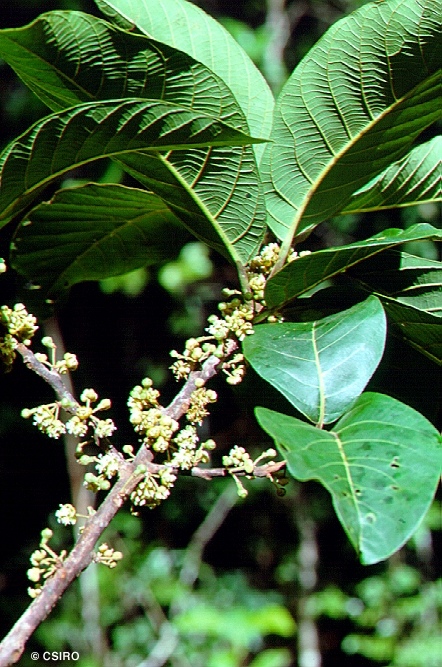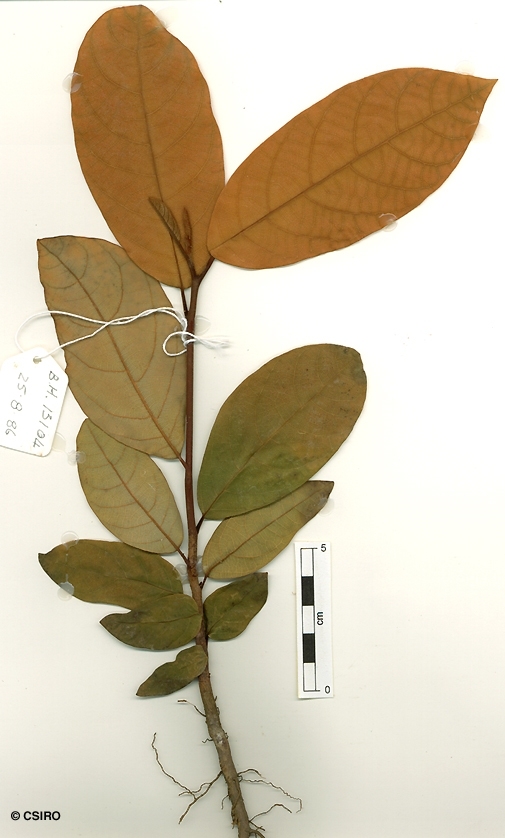Australian Tropical Rainforest Plants - Online edition
Litsea macrophylla Blume




Blume, C.L. (1826) Bijdragen tot de Flora van Nederlandsch Indie : 567. Type: Crescit: in montosis insulae Nusae Kambangae.
Fine yellowish flecks or stripes generally visible in the outer blaze.
Twigs +/- terete or slightly fluted, clothed in tortuous, brown or pale brown, erect hairs when young but eventually becoming glabrous. Leaf blades about 25-40 x 11-17 cm, usually slightly glaucous (quite glaucous on small trees), clothed in short, straight and tortuous, white and pale brown, erect hairs which persist even on mature leaves. Midrib flush with the upper surface. Petioles flat or channelled on the upper surface. Oil dots visible with a lens.
Flowers arranged in umbels of about 6 flowers which are enclosed in hairy bracts until anthesis. Tepals six. Male flowers: Tepals about 2.4-2.5 mm long. Stamens about 15, filaments pubescent with conspicuous attached glands. Female flowers: Tepals about 1.8-2.2 mm long. Staminodes about 2-4 with attached glands usually present opposite each tepal.
Fruits ellipsoid, about 13-14 x 10-11.5 mm. Receptacle about 7-10.5 x 9-11 mm. Seed about 9.5-10 x 7.5-8 mm. Cotyledons cream.
First pair of leaves ovate, about 33-43 x 16-27 mm, usually glaucous on the underside. At the tenth leaf stage: leaves elliptic to obovate, apex acute, base obtuse, upper surface with a few hairs along the midrib and lateral veins, underside usually glaucous; oil dots small, sparse, most numerous about the leaf margin and along the midrib and lateral veins. Seed germination time 35 to 65 days.
Occurs in CYP. Altitudinal range from sea level to 100 m. Grows in rain forest and monsoon forest. Also occurs in New Guinea.
This species probably grows large enough to produce millable logs but, as it grows in sparsely populated areas with limited resident sawmilling expertise, it is doubtful if it has ever been utilized. Wood specific gravity 0.50. Hyland (1989).





